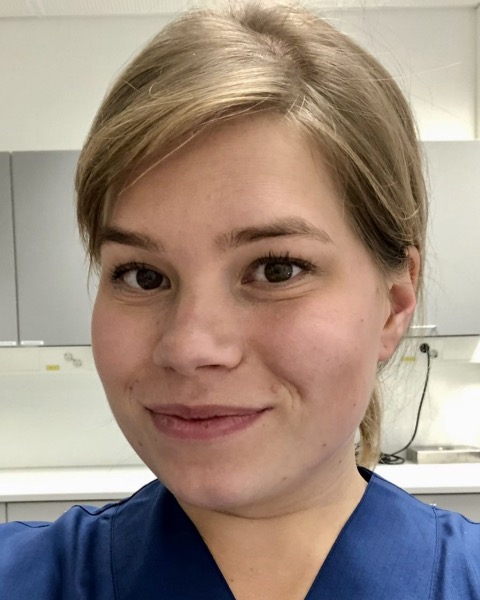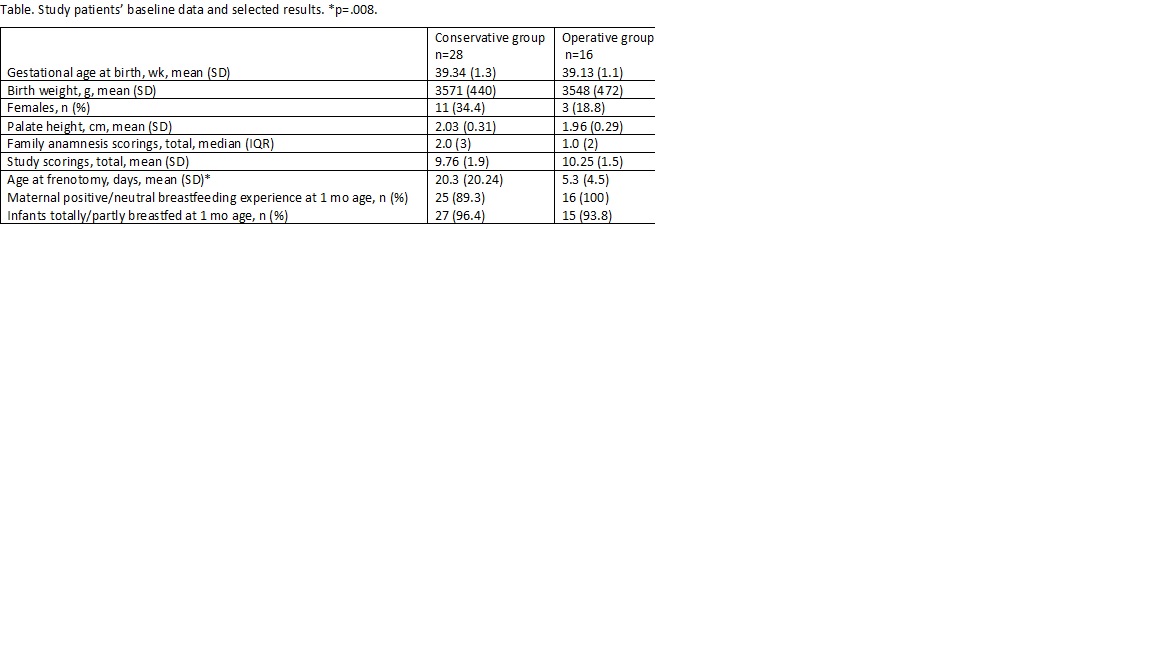Neonatology
Session: Neonatal General 5: PDA, Surgical Conditions, Infections
146 - LINgual frenulum in NEwborn infants (LINNE): feasibility pilot study of a randomized trial on the treatment of tongue-tie
Sunday, May 5, 2024
3:30 PM - 6:00 PM ET
Poster Number: 146
Publication Number: 146.2110
Publication Number: 146.2110

Stiina Aitamurto, MD (she/her/hers)
Specialist
Oulu University Hospital
Oulu, Pohjois-Pohjanmaa, Finland
Presenting Author(s)
Background: Frenulum linguinalis, normally a non-symptomatic oral structure, may appear tight, restricting tongue movements. A tongue-tie has been associated with neonates’ breastfeeding problems. However, the causality between its appearance, anatomy and functional impairment remain unknown, as 50% of tight-appearing frenulums never caused feeding problems. LINNE project was initiated to study the epidemiology, to define the indications of treatments, and to conduct a randomised, clinical trial (RCT; NCT05560750) on the treatments of tongue-tie. As some baseline data for designing the project were lacking, a pilot study was prospectively planned.
Objective: To produce the needed data, to assess the feasibility of previously unused study components, and to calculate final sample size for RCT, a pilot trial was conducted.
Design/Methods: Upon the ongoing LINNE-project, healthy, term neonates have been recruited to an observation study in Oulu University Hospital, Oulu, Finland. Study scoring consisted of the appearance of frenulum, family anamnesis, and maternal breastfeeding experience. The pilot RCT option was offered to those who scored >8. After consent, infants were randomized to conservative and operative groups. The primary outcome was successful breastfeeding at 1mo age, further defined as totally/partly breastfed infant + positive/neutral maternal breastfeeding experience. In previous studies, harm caused by tongue-tie had vanished in 92% of operated and in 47% of non-operated infants; with 80% power and 5% error, the calculated pilot sample size was n=48.
Results: From Oct 2022 to June 2023, 48 infants were randomized to conservative (n=32) and operative (n=16) treatments (Table); 44 (28 vs. 16) completed the primary outcome. The conservative group’s portion of the primary outcome was 30.9%. According to the study team’s clinical decision, >50% of patients should benefit from the given treatment. Therefore, the expected change in the primary outcome was 19.1%-points. With 80% power and 5% error, the RCT sample size was n=252. The assessed study components were, e.g., family anamnesis, an instrument for palate height measurement, midwives’ frenulum examination, and study group allocation. After consideration, midwives’ examination was set voluntary, and all others were continued unchanged. As the age at frenotomy was lower in operative vs. conservative group (p=.008, Table), the group allocation was considered feasible.
Conclusion(s): Data for designing RCT on efficacy and safety of conservative vs. surgical treatments of neonatal tongue-tie was acquired.

